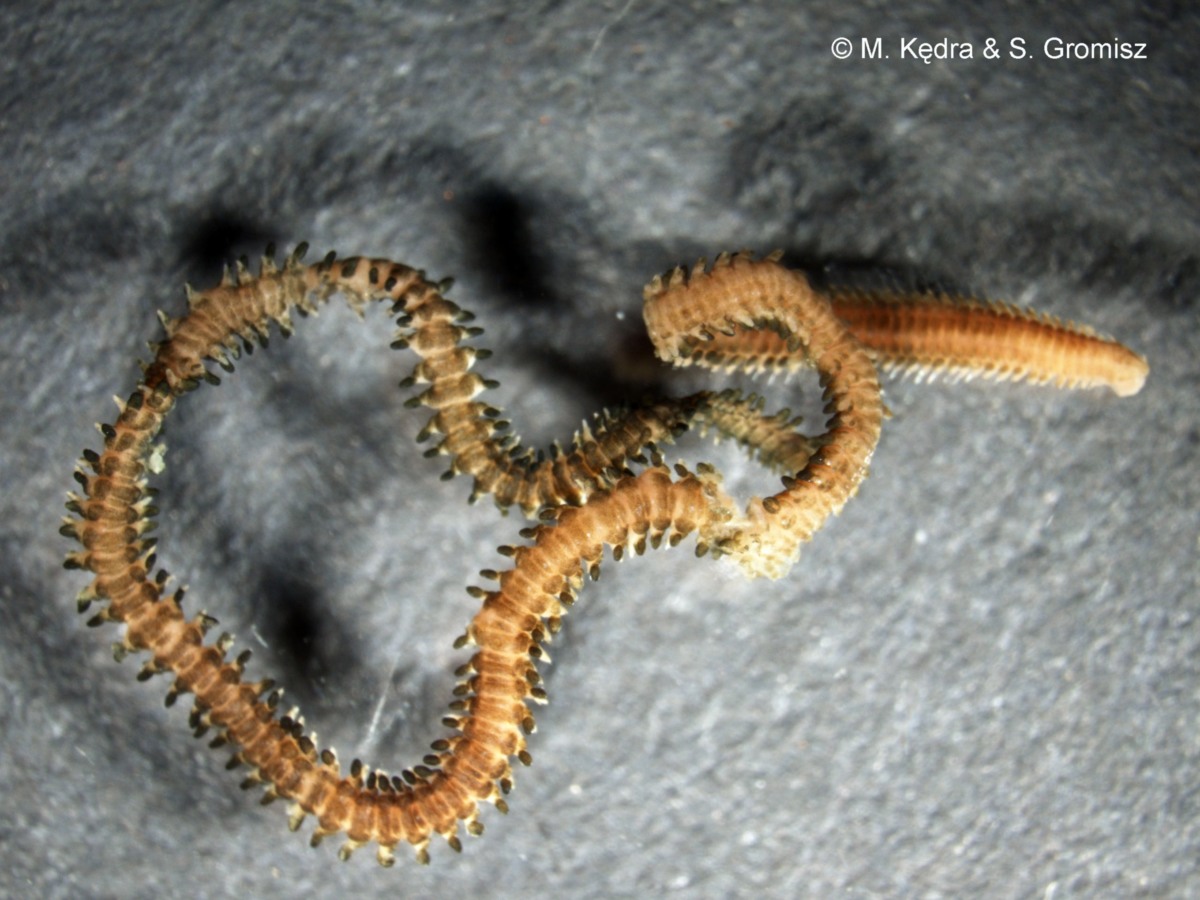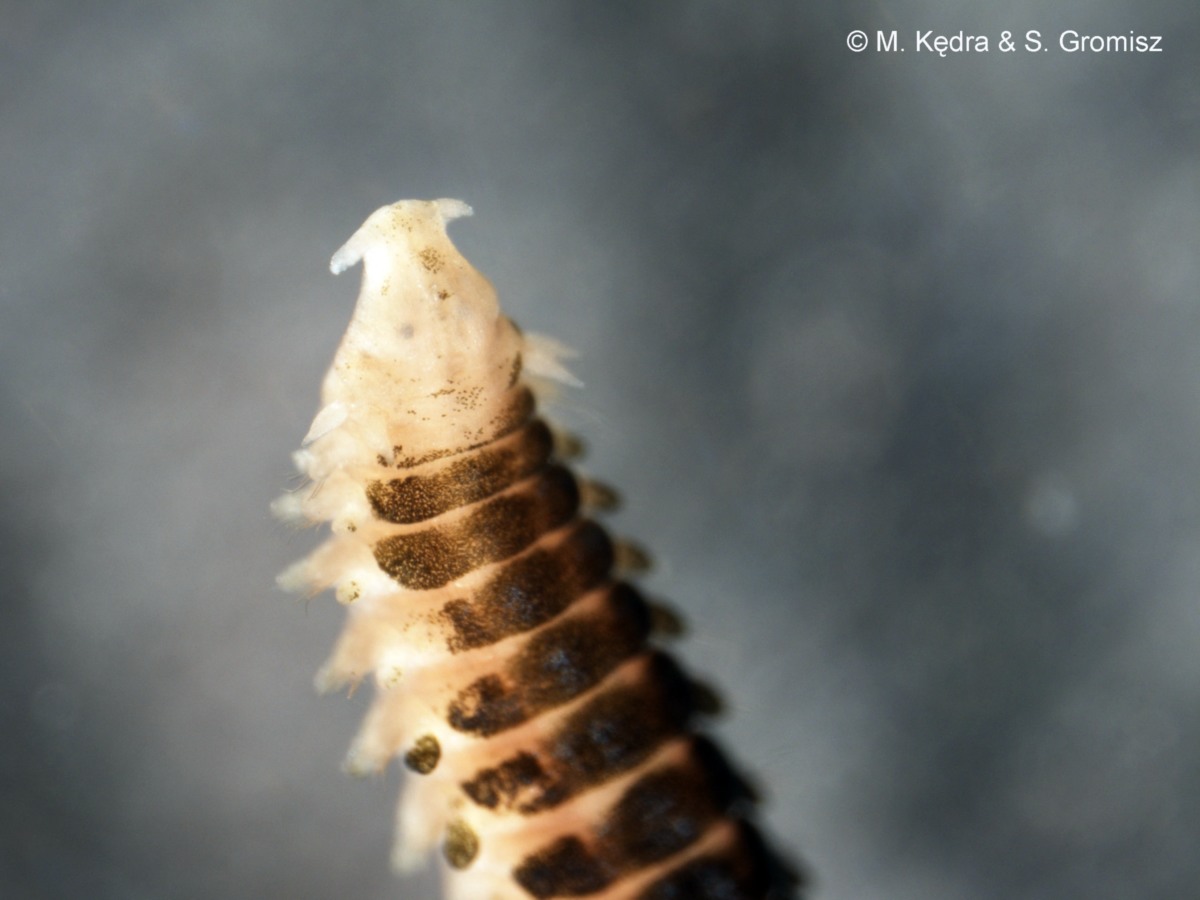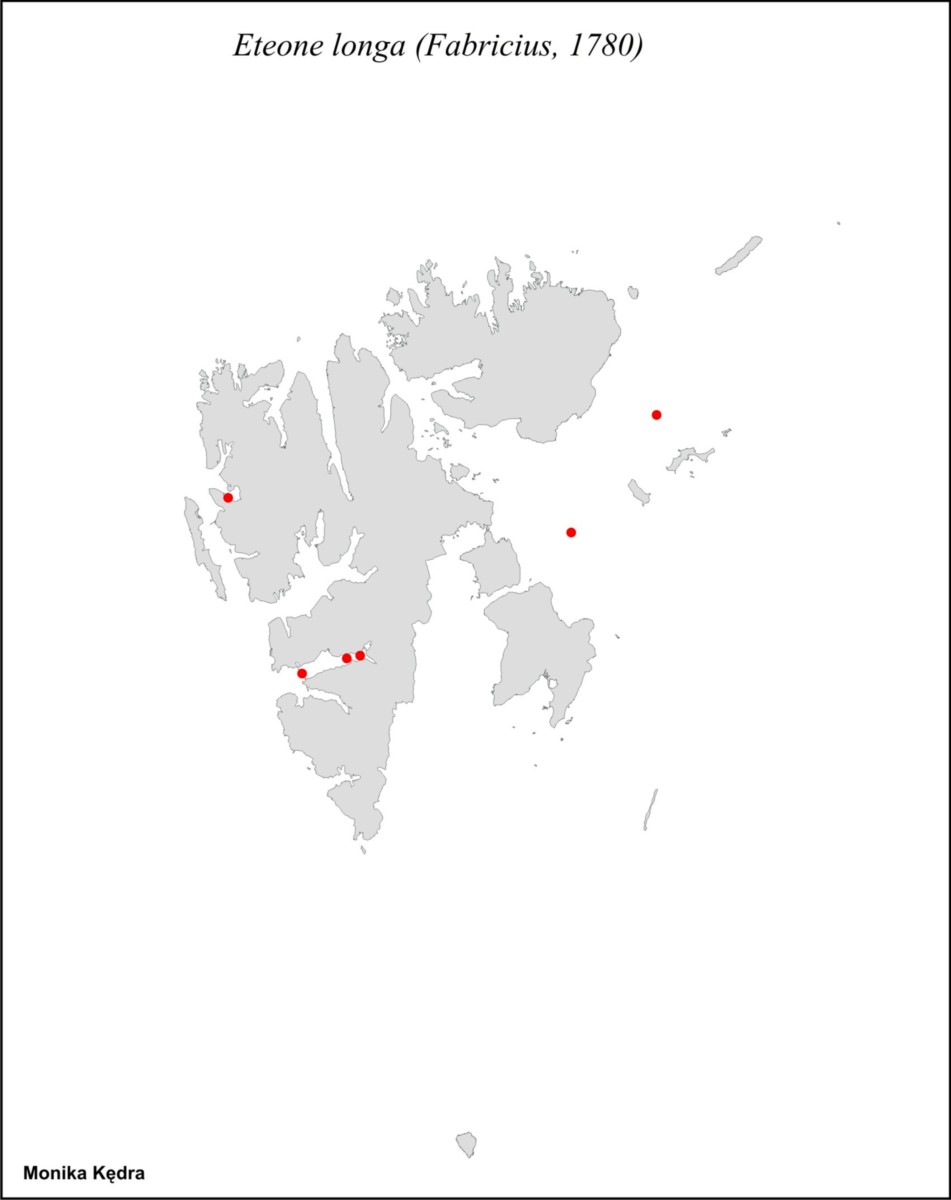Eteone longa (Fabricius, 1780)

|

|

|
Nereis longa Fabricius, 1780
Eteone leuckarti Malmgren, 1865
Eteone islandica Malmgren, 1865
Eteone arctica Malmgren, 1867
Eteone lilljeborgi Malmgren, 1867
Eteone villosa Levinsen,1883
Eteone longa Bergström, 1914
Distinguishing characteristics
2 pairs of tentacular cirri.
Alife animals transparent yellowish white.
Tentacular cirri of equal size.
Dorsal cirri of median segments longer then broad.
Species description
Body slender, interiorly and posteriorly tapered. Prostomium longer then wide, with straight concave sides and 2 small eyes. Tentacular cirri short, of equal size, reaching border between segments 2 and 3. Segment 2 with chaetigerous lobes carrying about 5-10 chaetae and ventral cirri of similar size and shape as those of following segments. Dorsal cirri of median segments oval, longer then broad. Ventral cirri narrow, as long as chaetigerous lobes. Pygidial cirri ovoid, inflated, slightly longer than broad. Preserved specimens are difficult to separate from E. flava, morphological differences being very slight.
Size
Up to 160 mm for 350 chaetigers.
Color
Living animals transparent yellowish white; eyes dark red. Preserved animals yellowish with three more or less distinct darker longitudinal lines dorsally, one median and two lateral. Dorsal and ventral cirri dark.
Habitat
Muddy sand and mud.
Intertidal to at least 120 m.
Mobility
Mobile.
Feeding
Deposit feeder.
Omnivore, predator, scavenger.
Life cycle
Breeding occurs from March to May. The eggs are deposited in a cocoon.
Distribution
Arctic, Hudson Bay to off North Carolina, Bering Sea to Mexico, Japan Sea, Iceland, Norway to English Channel.

